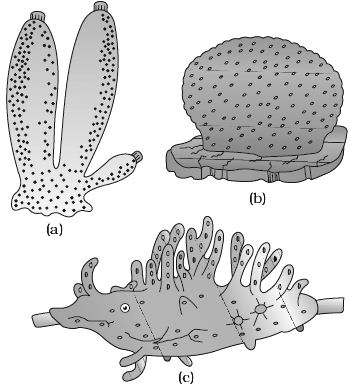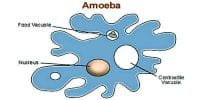Members of phylum porifera are commonly known as sponges. They are generally marine and mostly asymmetrical animals (Figure). These are primitive multicellular animals and have cellular level of organization. Sponges have a water transport or canal system. Water enters through minute pores (ostia) in the body wall into a central cavity, spongocoel, from where it goes out through the osculum. This pathway of water transport is helpful in food gathering, respiratory exchange and removal of waste.

Fig: (a) Sycon, (b) Euspongia, (c) Spongllla
Choanocytes or collar cells line the spongocoel and the canals. Digestion is intracellular. The body is supported by a skeleton made up of apiaries or spongin fibres. Sexes are not separate (hermaphrodite). i.e., eggs and sperms are produced by the same individual. Sponges reproduce asexually by fragmentation and sexually by formation of gametes. Fertilization is internal and development is indirect having a larval stage which is morphologically distinct from the adult.
Examples: Sycon (Scypha), Spongllla (Fresh water sponge) and Euspongia (Bath sponge).












